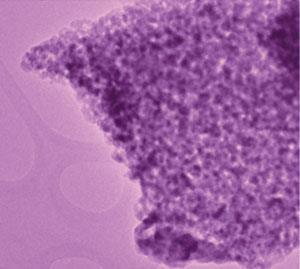If only their components were cheaper

Scientists in China and the US say a new anode material they have created represents a significant step forward in the development of long-life stationary lithium-ion batteries for large-scale energy storage systems.
Lithium-ion batteries are one of the most effective rechargeable batteries thanks to their high energy density and low environmental impact. However, the performance of current lithium-ion batteries, which use graphite as the anode material, cannot satisfy requirements of large-scale systems that could support smart electricity grids linked with renewable sources. Their charging rate is limited because at voltages required for a fast charge, lithium deposition, or plating, occurs, which can result in the battery short circuiting.
Yong-Sheng Hu of the Beijing National Laboratory for Condensed Matter Physics and coworkers hope to overcome this with their TiNb2O7 anodes. Batteries using the new anodes have a reversible storage capacity of 281mAh g–1 and high charge efficiency at an average storage voltage of 1.66V, which is far from the lithium plating voltage, making them safer. The batteries deliver extremely high rate performance – they can be charged to 70% of full capacity in three minutes – and a long cycle life – over 1000 cycles their capacity retention is 84%. What’s more, nanoporous TiNb2O7 has a packing density almost two times that of commercial graphite and six times higher than TiO2 nanopowder, so it can store more energy within the same size of the battery as graphite or other nano-sized anode materials.

Hu says these credentials can be attributed to the nanoporous framework having a variety of favourable properties: ‘Firstly, the interconnected channels facilitate diffusion of the electrolyte into the bulk of the electrode material. Secondly, the high lithium ion diffusion coefficient in TiNb2O7, which is similar to lithium ion diffusion in commercialised LiCoO2 and LiMn2O4, improves the intrinsic kinetics and enables the superior rate capability. Thirdly, nanoporous TiNb2O7 provides a continuous electronic conduction path along well-connected nanocrystals. Finally, these interconnected channels can alleviate lattice stress/strain generated from the volume expansion and contraction associated with lithium insertion and extraction, thus improving the cycling stability and charge efficiency of the electrodes.’
‘We have here a new robust electrode material with very fast kinetics and stable cycling. The example of the structure should be inspiring,’ says Michel Armand a battery expert at the University of Picardie in France. But these properties come at a price, and Armand caveats this praise by stressing ‘the use of niobium is not sustainable’.
‘Niobium is expensive,’ agrees Hu and explains that one of the reasons for its high cost is because it is difficult to separate from the element tantalum because of their very similar physical and chemical properties. ‘We are looking for cheaper precursors.’






No comments yet